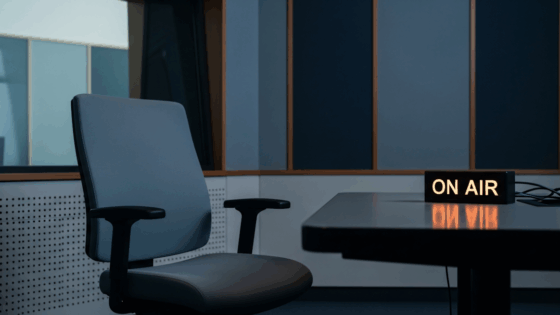on
BY SIMONE J. SMITH
Every rising, you wake up with this feeling. That today could be the day it all changes. That today, you might finally catch a break. You get up, go through the motions of getting ready for work—showering, dressing, and quickly grabbing a cup of coffee. There’s a sense of routine, but also a lingering fatigue.
You enter your bustling office building, greeted by the hum of activity. You sit at your desk, staring at an inbox full of unread emails. You look up at the wall and there hangs your vision board—a reminder of dreams and goals. You have been stuck at the same level for so long. You want to believe that hard work will pay off, that the universe will reward your perseverance, but what if… what if it never does? What if this is it?
I’ve been where you are, readers. Stuck, frustrated, feeling like no matter what I did, it wasn’t enough. It wasn’t easy. I had to take a hard look at where I was and where I wanted to be. I realized that I couldn’t just wait for someone to recognize my worth. I had to make it undeniable…
There are 24 hours in a day (or 1,440 minutes, if you really like to count your life away). The average person sleeps around eight hours (with the Dutch sleeping the most and the Singaporeans the least). That leaves 16 waking hours left to spend. We need to subtract the seven to eight hours a day during which most people work, so we’re down to nine remaining hours.
Now the rest of those nine hours are taken up by life administration: shopping, housework, unpaid labor (e.g. care work), and eating and drinking. As you can imagine, there are some cultural differences. Our World in Data reveals that people in: France, Greece, Italy and Spain report spending more time eating than people in most other European countries.
Is there a difference between how men and women spend their time? According to the OECD, around the world, women spend two to ten times more time on unpaid care work than men. This has a knock-on effect in how many leisure hours the genders have to spend. For instance, in Norway and New Zealand the difference is almost negligible. In Portugal and India, however, men have 50 percent more leisure time than women.
So how do we use our time wisely, effectively, so that we can achieve our dreams and our goals? One of the key findings that comes up again and again is known as the “5-hour rule.” This is the rule where we spend one hour a day: learning, reflecting, and thinking. We do this five times a week (which makes up the “5-hour” rule). The rule dates to Benjamin Franklin, who would devote (at least) an hour each day specifically to learning something new. He would rise early to read and write, and he even set up his own club of artisans and experimenters.
The idea is that devoting an hour of your day to education: exercises the mind, improves your skills, and rehearses great discipline. Even accepting the wisdom in the 5-hour rule, it can still come over as daunting. After a long day, with tired eyes and a throbbing headache, most of us will reach for the TV remote, or our phones to scroll through social media. This is much easier for us to do. Let me break down how you can roll out the 5-hour rule effectively in your life.
The first thing that you have to know is that you need to focus on three key activities: reading, reflection, and experimentation.
- Spend time reading books, articles, or industry reports that help you gain new knowledge or insights. Reading is a powerful way to expose yourself to new ideas and perspectives.
- Take time to reflect on what you’ve learned. This could involve journaling, discussing with a mentor, or simply thinking about how to apply new concepts to your life or work.
- Try out new ideas, skills, or projects. Experimenting allows you to apply what you’ve learned and see how it works in real life. This could involve starting a new project, practicing a skill, or testing a new strategy. Don’t just stick to what you know. Use your five hours to explore new: areas, learn new skills, and broaden your horizons. Curiosity is a driving force behind innovation and success.
The thing here is to focus on the learning process rather than immediate results. Keep a journal, or log to track what you’ve learned and how you’ve applied it. This helps you stay motivated and see the value of your efforts over time. Look for opportunities to apply new knowledge and skills in your work, or personal life. This not only reinforces what you’ve learned, but also helps you make meaningful progress towards your goals.
I started by focusing on the things I could control. I asked for feedback, made sure I was visible in meetings, and built relationships with people in positions to help me grow. The biggest change was in my mindset—I stopped seeing setbacks as failures and started seeing them as lessons.
Stay in the loop with exclusive news, stories, and insights—delivered straight to your inbox. No fluff, just real content that matters. Sign up today!
We, as humans are guaranteed certain things in life: stressors, taxes, bills and death are the first thoughts that pop to mind. It is not uncommon that many people find a hard time dealing with these daily life stressors, and at times will find themselves losing control over their lives. Simone Jennifer Smith’s great passion is using the gifts that have been given to her, to help educate her clients on how to live meaningful lives. The Hear to Help Team consists of powerfully motivated individuals, who like Simone, see that there is a need in this world; a need for real connection. As the founder and Director of Hear 2 Help, Simone leads a team that goes out into the community day to day, servicing families with their educational, legal and mental health needs.Her dedication shows in her Toronto Caribbean newspaper articles, and in her role as a host on the TCN TV Network.













